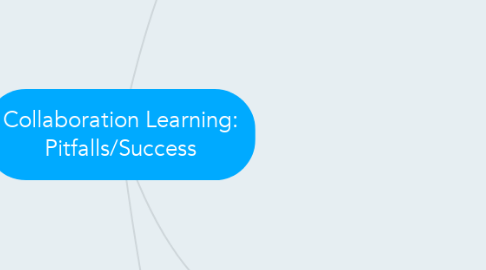
1. Collaborative Learning
1.1. Social Interaction doesn't automatically happen just because it technologically able
1.1.1. Must be organised unless it will not be meaningful or occur
1.2. Student groups do not ensure collaboration
1.2.1. Collaboration must be structured
1.2.1.1. Cognitive Approach
1.2.1.1.1. Promotes Epistemic Fluency
1.2.1.1.2. Different Ways of Knowing
1.2.1.1.3. describing, explaining, predicting, arguing, critiquing, evaluating, explicating and defining
1.2.1.2. Direct Approach
1.2.1.2.1. Adaptable well-defined techniques for specific subject areas
1.2.1.3. Conceptual Approach
1.2.1.3.1. Specific types of collaboration can be created/enforced
1.2.1.3.2. Positive Interdependence, Promotive Interaction, Individual Accountability, Interpersonal Skills, Group Processing
1.2.1.3.3. Highly adaptable to all situations
2. Collaboration applied online learning environments
2.1. Computer media online interaction is low in media richness due to lack of visual and audio information
2.2. Sense of community has to be fostered to be created in an online setting
2.2.1. Social dimensions must be created to get positive interdependence of the group
2.2.2. Scaffolding must be planned
2.2.2.1. Instructional
2.2.2.1.1. Ask questions
2.2.2.2. Cognitive
2.2.2.2.1. Write summary
2.2.2.3. Motivational
2.2.2.3.1. postitive reinforcement
2.2.3. Dimensions of tutoring in web based environments
2.2.3.1. Administrative
2.2.3.1.1. coordination of course activities
2.2.3.2. Social
2.2.3.2.1. Positive interdependence of group
2.2.3.3. Technical
2.2.3.3.1. Introducing technical tools
2.2.3.4. Pedagogical
2.2.3.4.1. Related to questions, summaries, feedback
2.2.4. Zone of Proximal Development

